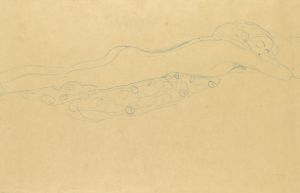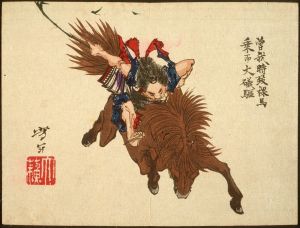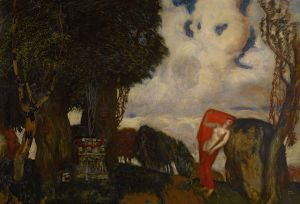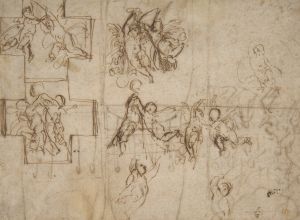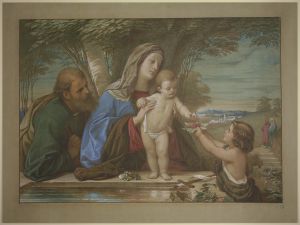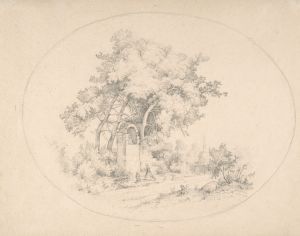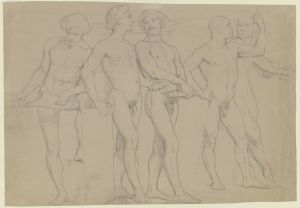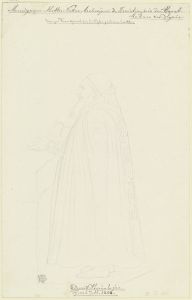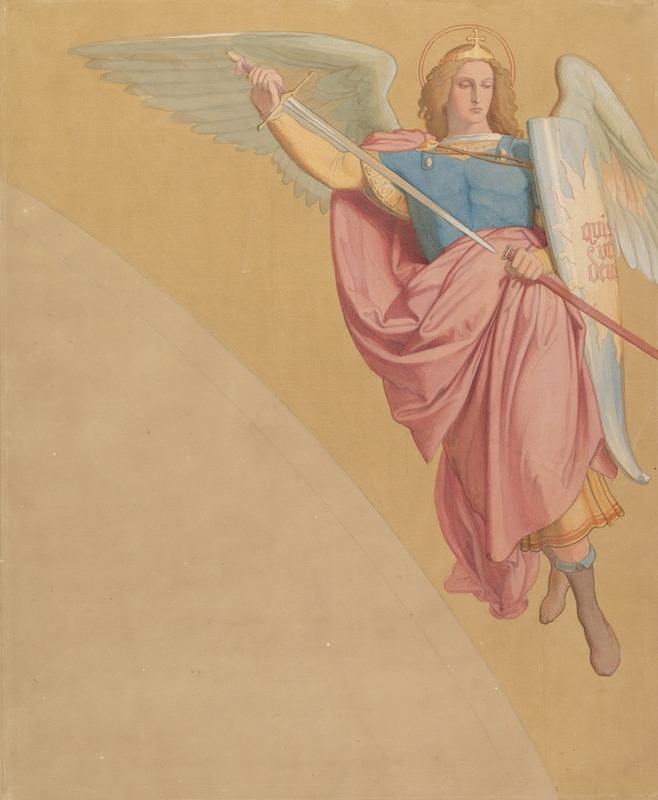
Archangel Drawing a Sword
A hand-painted replica of Eduard von Steinle’s masterpiece Archangel Drawing a Sword, meticulously crafted by professional artists to capture the true essence of the original. Each piece is created with museum-quality canvas and rare mineral pigments, carefully painted by experienced artists with delicate brushstrokes and rich, layered colors to perfectly recreate the texture of the original artwork. Unlike machine-printed reproductions, this hand-painted version brings the painting to life, infused with the artist’s emotions and skill in every stroke. Whether for personal collection or home decoration, it instantly elevates the artistic atmosphere of any space.
Eduard von Steinle's "Archangel Drawing a Sword" is a notable work by the German painter and illustrator, Eduard von Steinle, who was a prominent figure in the Nazarene movement. Born on July 2, 1810, in Vienna, Steinle became known for his religious and historical paintings, which often reflected the spiritual and moral values of the Nazarene movement, a group of early 19th-century German Romantic painters who aimed to revive honesty and spirituality in Christian art.
"Archangel Drawing a Sword" is a depiction of an archangel, a high-ranking angel in Christian theology, preparing for battle. The painting captures the moment of divine intervention, symbolizing the eternal struggle between good and evil. Steinle's work is characterized by its meticulous attention to detail, vibrant colors, and the dramatic use of light and shadow, which are all evident in this piece.
The archangel in the painting is typically identified as Michael, one of the most revered archangels in Christian tradition, known for his role as a protector and leader of the heavenly armies. Michael is often depicted in Christian art as a warrior angel, and Steinle's portrayal aligns with this iconography. The archangel is shown with a determined expression, drawing a sword from its sheath, ready to engage in combat. This imagery is deeply rooted in biblical references, particularly from the Book of Revelation, where Michael leads the angels in the battle against the forces of evil.
Steinle's background in the Nazarene movement greatly influenced his artistic style and thematic choices. The Nazarenes sought to return to the purity and simplicity of early Christian and medieval art, rejecting the academic art styles of their time. They emphasized religious and moral themes, often drawing inspiration from the Bible and Christian legends. Steinle's "Archangel Drawing a Sword" reflects these principles through its spiritual subject matter and the artist's dedication to conveying a sense of divine presence and moral righteousness.
The painting is also notable for its technical execution. Steinle's use of color and composition enhances the dramatic effect of the scene. The archangel's figure is central and dominates the canvas, creating a focal point that draws the viewer's attention. The background, though less detailed, provides a sense of depth and context, suggesting a heavenly or otherworldly realm.
Eduard von Steinle's contributions to religious art were significant during his lifetime, and his works continue to be appreciated for their spiritual depth and artistic quality. "Archangel Drawing a Sword" is a testament to his skill and his commitment to the ideals of the Nazarene movement. Steinle passed away on September 19, 1886, in Frankfurt am Main, but his legacy endures through his paintings, which remain influential in the study of 19th-century religious art.
In summary, "Archangel Drawing a Sword" by Eduard von Steinle is a powerful representation of an archangel, likely Michael, preparing for battle. The painting exemplifies the artist's dedication to religious themes and his mastery of the Nazarene style, characterized by its spiritual intensity and meticulous craftsmanship.






